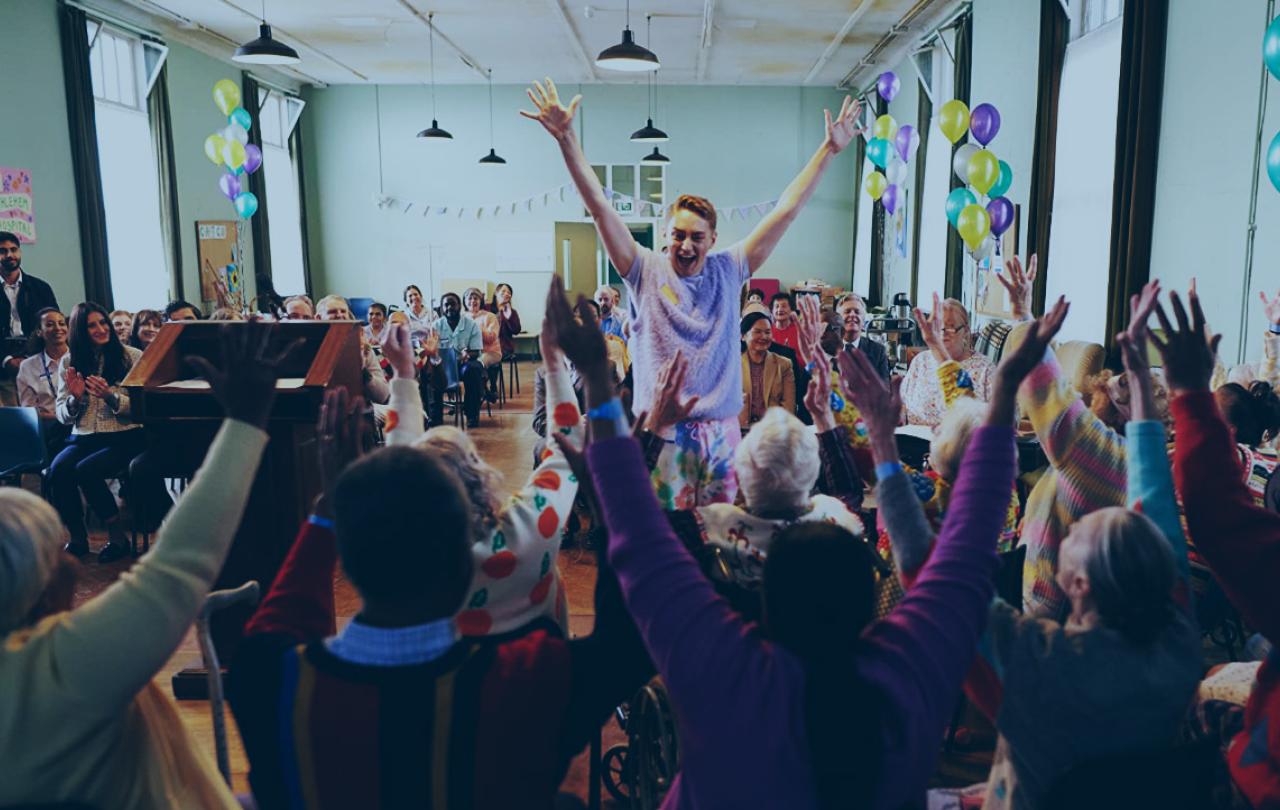
Spoiler alert – this film review reveals significant elements of the plot.
Allelujah! is not a film that shies away from the big issues. In fact, you would be hard pressed to find a big issue this comedy/political commentary/drama/part-thriller doesn’t at least make reference to (and yes, it spreads itself across all of these genres too). With such an eclectic approach it is difficult at times to keep up with the narrative, and the deeper meaning of the film. Based on the Alan Bennett play, the plot centres around The Bethlehem, a small northern hospital for geriatric patients, which is facing closure due to the Tory government’s efficiency drive. It focuses on two members of staff, Alma Gilpin, a stoic and matter-of-fact but seemingly excellent nurse who has served the hospital her entire career, and a younger Dr Valentine. Other protagonists include an ex-miner patient and his son, a management consultant who has “made it” to London and is currently advising the Health Secretary to close hospitals such as the one in question for the sake of government finances.
Whether it’s politics or the personal, this film has it all. It deals with levelling up, the cultural and economic gap between the north and south, the challenges of budget cuts in the NHS, the problems of a national health service claiming to 'care' but with managers more preoccupied by Westminster’s economic priorities. It depicts families waiting for older relatives to die in order to grab their inheritance, the broken relationship between an ageing man and his son, and those all-important stories of the older patients’ lives well-lived. And yet as the story line develops, a plot twist emerges which comes to overshadow the entire film, and in the process speaks to what is perhaps the most poignant of the many discussions it raises. Nurse Gilpin, who, until now has appeared consistently caring and committed to her patients, has been quietly administering fatal beakers of milk and morphine to those who she deems to be on “her list” of those who most need relief from their situation. When confronted by the doctor she justifies her actions with a multifaceted answer based on the requirement to provide more beds to a broken healthcare system, but also insisting “I had ended someone’s suffering”.
When Dr Valentine remarks, “I like old people” a visitor responds “not even old people like old people”.
The manner in which Nurse Gilpin goes about what is effectively enforced euthanasia, is deeply chilling. And yet her reasoning is not entirely foreign to us – to end suffering could be deemed a noble cause. In fact, the need to simply delete the reality of suffering, particularly the suffering of the old is one that perhaps is not so uncommon. Throughout Allelujah!,we are reminded of our tendency to run from, to detest, to reject the suffering of the elderly in our society. When Dr Valentine remarks, “I like old people” a visitor responds “not even old people like old people”. A teenage intern declares to a patient “I hope I never live to be your age”. At the same time, characters look back on the days “when the elderly weren’t farmed out”, and questions are asked of families “if they love them, why do they put them away?”. A very good question. Of course, care needs are often too great for families to endure, yet it is still important to ask why the suffering of the old has become a professionalised service, which most of us avoid at all costs. Perhaps the answer to this is that we don’t like to watch the old suffer, we don’t like to watch them die, because their suffering and their death remind us of our future selves, our future suffering, our future death. In our sanitised, anything-is-possible-with-medicine-and-science society, death and the suffering that comes with it, is something from which we flee at all costs. Instead of acknowledging and working with it, we would rather pretend it wasn’t there at all.
And yet, even as we try to avoid it, suffering and death are both certain parts of all our futures. 100% of us will die. For Nurse Gilpin, the solution to this is to bring on death prematurely, to erase the pain, overcome the misery by offering a false hope – that it doesn’t need to exist at all. In direct contrast to this, in a film which is littered with Christian references (Allelujah, The Bethlehem), there is a different approach taken by a messiah-type figure who seems to get everything right. Dr Valentine is compassionate and understanding. He not only challenges the political systems which undermine those most at the margins of society, but also has the kind of bedside manner we would all hope for in a doctor. In a closing monologue Dr Valentine utters the words of the doctors in the NHS, “We will be here when you are old, and we would die for you, we are love itself and for love there is no charge”.
It is this suffering with which is so compelling, this suffering with which is truly sacrificial.
Nurse Gilpin and Dr Valentine offer two fundamentally different approaches to end of life care. One hastens the end quickly, deletes the suffering as efficiently as possible in order to make way for those in less pain. The other sits with those who suffer, holds their hand, gently cares for the human person that is in front of them. Even more, and perhaps most significantly Dr Valentine does not only watch from afar, but is willing to suffer himself for the sake of those in pain - working tirelessly, giving himself over day after day, fighting on with little sleep for limited pay just to make things a little less painful. It is this suffering with which is so compelling, this suffering with which is truly sacrificial, this suffering with which speaks of something much greater than politics, efficiency or inheritance, this suffering with which is indeed “love itself”, completely free of charge. This is the logic that Christians see in the ancient notion of the incarnation, celebrated every Christmas, of God with us. This is what our older people need, this is what we will all need when we grow old. Let us only hope that when we get there, we find the one who is willing to offer it.





